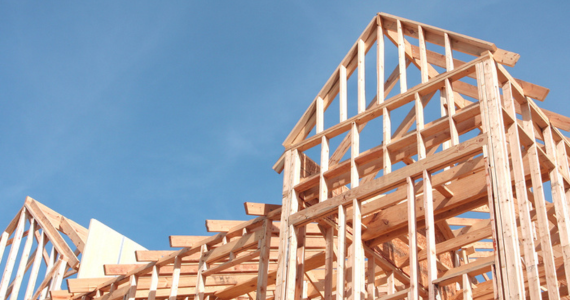If you are building or undertaking major renovations to your home, you may be looking for a construction loan. Unlike a standard loan, a construction loan allows you to pay for each stage of the build without having to come up with all the funds upfront.

How construction loans work
Also referred to as building loans, this type of loan is aimed at people either building a new home or making significant structural changes, such as adding a room or changing the roof, to their pre-existing home.
Construction loans allow for flexibility throughout the build or renovation, through the process of drawing down progress payments.
Draw down progress payments
A key feature of a construction loan is the flexibility to draw down your loan in instalments throughout the building process, which is referred to as a draw down or progress payments, rather receiving the full loan at the start of your major project.
There are usually five to six stages in which you’ll receive the instalments, including the deposit, foundation works, the framework, lock-up, fixing (plumbing and electrical) and completion.
While this payment arrangement, rather than receiving a lump sum at the beginning, can seem cumbersome, it means that you’ll only be drawing down on your loan to pay your builder and other contractors as they complete stages of work.
This can be beneficial as you will only be charged interest on the amount drawn down, not the total. You also don’t have to pay back the principal loan amount until after construction has been completed. helping you manage your cashflow throughout the project.
Fixed price contract
Construction loans are usually based on a fixed price contract, whether that be the land you are building on or the property you are renovating. This means that there is little room for change while the building or renovations are going ahead.
This loan tends to be interest only for the period of building/renovations, then become principal and interest once completed. You may be able to negotiate that the interest only term can be continued, so discuss this with us if it is something that appeals to you.
Should changes need be made to your build along the way, you must discuss this with your lender as this can be likely to vary the forecast costs. As variations are very common in building and renovating, it’s wise to make sure you have accounted for possible changes when applying for the loan.
How to apply
To apply for a construction loan, you will need to show the lender your council approved building plans and fixed price building contract from a registered builder. Usually, you will also be asked to make a deposit of 10% – 20% of the total cost, it’s worth noting that you might have to pay Lenders Mortgage Insurance if your deposit is less than 20%.
Having a licensed builder greatly increases your chances of getting the loan, though in some instances you can still apply for the loan as an owner builder. Applying as an owner builder involves more paperwork and can be more arduous, so be prepared that this process may take longer.
You may be visited by a valuer during the construction/renovation process, to ensure that everything is running to plan. Based on the valuer’s report, the lender will either continue the payments or alert you of a problem.
Be aware of the dates of your loan, such as when the build must be completed by (for example, within 24 months from the date of your first draw down). If the build has been delayed, keep us informed, as we will need to discuss your moving timelines with the lender.
Once the building or renovations are completed, you will need to provide the final paperwork, such as the builder’s final invoice or receipt, building insurance policy and certificate of occupancy.
The building and renovating process can be stressful as it is, so chat to us today to see how we can help you navigate construction loans. We can step you through the process to get you on your way to securing the money to fix up or create your home.
Important: This provides general information and hasn’t taken your circumstances into account. It’s important to consider your particular circumstances before deciding what’s right for you. Although the information is from sources considered reliable, we do not guarantee that it is accurate or complete. You should not rely upon it and should seek qualified advice before making any investment decision. Except where liability under any statute cannot be excluded, we do not accept any liability (whether under contract, tort or otherwise) for any resulting loss or damage of the reader or any other person.
Any information provided by the author detailed above is separate and external to our business and our Licensee. Neither our business nor our Licensee takes any responsibility for any action or any service provided by the author. Any links have been provided with permission for information purposes only and will take you to external websites, which are not connected to our company in any way. Note: Our company does not endorse and is not responsible for the accuracy of the contents/information contained within the linked site(s) accessible from this page.


